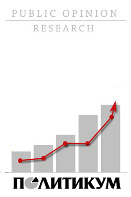| NSPM in English | |||
Rescuing American Capitalism |
 |
 |
 |
| среда, 16. децембар 2009. | |
|
(The National Interest, 16.12.2009)
From the January/February 2010 issue of The National Interest. THE CURRENT crisis in the financial system was well over a decade in the making. A combination of new incentives to increase home ownership, long-term low interest rates, the taking on of increased leverage by banks, and the creation of financial products that were not properly overseen or managed led to a catastrophic economic meltdown. The question now is can we learn from this and also prevent what ended up being a disastrous handling of the crisis itself from happening again. Any responsible government has a plan in place should a national-security disaster strike. It is clear from the uncoordinated actions taken by the U.S. Treasury and the Federal Reserve, however, that they did not have a similar set of contingencies at the ready for a financial calamity. Rather than respond on an ad hoc basis to the fallout from the crisis, making it up as we go along, the United States needs a thoughtful approach as we move forward. IT ALL began seemingly innocently enough with the quite-honorable programs of the Clinton administration to provide the opportunity for more people to own their own homes. To do this, the government loosened the credit requirements that applied to Fannie Mae and Freddie Mac, allowing them to underwrite far riskier loans than in the past. And thus were the first seeds of our present-day predicament sown. When Fannie Mae and Freddie Mac got into the loan-underwriting business in a very big way, prerequisites for obtaining a mortgage became far more malleable. Fannie Mae and Freddie Mac bought mortgages from the local banks, turning the local banker into nothing more than a servicing agent receiving an origination and a service fee. And with many of these loans subprime at best, repayment became an increasingly unlikely prospect. Yet this unwise practice went further still, with numerous mortgage brokers entering the fray as well, originating subprime loans to feed the securitization business of many of the investment banks like Lehman Brothers that were later to face failure. In essence, the credit controls and commonsense requirements that used to be necessary in granting a mortgage were weakened, local banks were no longer invested in the process and the creation of a distorted housing market was well on the way. As far back as 1999 the potential risks involved were obvious. As one New York Times author wrote: “In moving, even tentatively, into this new area of lending, Fannie Mae is taking on significantly more risk, which may not pose any difficulties during flush economic times. But the government-subsidized corporation may run into trouble in an economic downturn, prompting a government rescue similar to that of the savings and loan industry in the 1980’s.1” Added to this, rightly or wrongly, then–Chairman of the Federal Reserve Alan Greenspan kept interest rates extremely low for an extended period of time. Inevitably, that led to an asset bubble. When you compound this with increasing home prices due to easier credit, the inflation of the real-estate market was massive. Banks—in particular investment banks—also began to increase their leverage. Normally these institutions may have held debt-to-equity ratios at relatively low levels. But they increased that number to a ratio of over thirty to one, and for reasons still unknown, regulatory authorities and lenders approved this incredibly risky behavior. This meant that investment banks that would normally and historically borrow short-term to invest in short-term assets—like government securities—were now using this extended capital to buy long-term illiquid assets including real estate. Bottom line: they got locked into long-term real-estate deals with short-term, borrowed money. This was a disaster in the making. Reinvesting short-term, borrowed funds in illiquid long-term investments means you believe that there will be no downturns in the market at any point in the foreseeable future. Clearly, this was unrealistic thinking. But the basis for the crisis goes further still. Adding to the mix was the creation of complex financial products that went largely unregulated—the now-infamous credit-default swap, which is in essence nothing more than an insurance policy on investments like bonds or collateralized debt obligations.2 When an investor buys a bond or a CDO, he or she wants to be sure that at the time the asset matures the payment will be made, thus the purchase of a credit-default swap as insurance. Yet, even as the creation and purchase of these credit-default swaps grew, absent was any regulation or exchange—think for example of the New York Stock Exchange—where one could see the value of these instruments. There was no transparency, and this lack of regulation, supported by then–Treasury Secretary Robert Rubin, was dangerous. What was needed was a transparent market in which one could value a given product, making it possible to compare it to other products on offer—the only way to reasonably assess the value and risk involved in the purchase of a given asset. Making matters worse, some of these CDOs were backed by mortgages. The investment banks that had begun to package mortgages into mortgage-backed securities operated under the not-very-wise thinking at the time that since mortgages were coming from all over the country, they created a sound, diversified investment. Of course, some of these mortgage-backed securities were made from sounder loans; others, from the less-likely-to-be-paid-back heap. Others still were a combination. Essentially, the credit worthiness of these mortgage-backed securities was not universal. But the rating agencies like Moody’s and Standard & Poor’s gave many of these products AAA ratings, indicating that the credit risk associated with them was near zero. This was an inaccurate undertaking of risk by buyers, sellers and rating agencies alike. And there seems to have been an almost-universal lapse in the basic due diligence of reviewing and understanding the documentation associated with the sale of a credit-default swap or a CDO. The piles upon piles of papers involved in these transactions indicated the complexity of the deals at hand and the need to examine the intricacies involved. Yet, blinded by the euphoria of the marketplace, investors didn’t feel they needed to look at the details within these documents. Many originating institutions paid large bonuses to their traders based on volume and short-term gains regardless of the quality of the instrument. And because of the relatively high interest rates paid by these mortgage-backed securities, investors made bigger and bigger and riskier and riskier deals instead of looking at the long-term soundness of any given transaction, relying only on the superficial analysis by the rating agencies. WITH THE making of the crisis based on such a broad spectrum of errors, it seems inevitable that an asset bubble would be created. And thus we come to the year 2007, when a number of intervening factors finally brought down the financial house of cards. Rating agencies began belatedly to withdraw their AAA ratings on many of the collateralized debt obligations, which in turn caused the cost of credit-default swaps undertaken by the guarantors to skyrocket. The CDO market came to a screeching halt. Institutions that had issued the credit-default swaps against what they perceived to be a nearly riskless asset were forced to face the probability of substantial future losses. Institutions that had purchased the credit-default swaps became worried about the soundness of the issuers and demanded collateral against the possibility of nonperformance. Credit-default swaps may also have been used in a less straightforward way (one that the SEC should investigate to see if this form of market manipulation took place), for it has been suggested that speculators were buying credit-default swaps and shorting the stock of the same company as a way of enhancing their profit. Accelerating the meltdown further still was the institution of mark-to-market accounting. The Financial Accounting Standards Board (FASB), for which the SEC has oversight responsibilities, instituted these guidelines to theoretically help companies (and investors) more accurately gauge the value of the company and the health of the balance sheets. This mark-to-market accounting required companies to value their assets at present market value rather than at value at maturity. Although this may sound reasonable, and certainly for some companies with certain kinds of assets it is, for others it is inappropriate, making many companies seem far less stable and profitable than they actually are. The added problem in coming up with mark-to-market values is that with respect to a CDO, for example, there could be, literally, hundreds of underlying instruments. It has been argued that one would need a Cray supercomputer to dissect all the underlying positions to enable a market value to be computed. Simply put, in a lot of cases, the market values used were pure fiction. As the Institute of International Finance commented in a report issued in April 2008: “Often dramatic write-downs of sound assets required under the current implementation of fair-value accounting adversely affect market sentiment, in turn, leading to further write-downs, margin calls and capital impacts in a downward spiral that may lead to large-scale fire-sales of assets, and destabilizing, pro-cyclical feedback effects. These damaging feedback effects worsen liquidity problems and contribute to the conversion of liquidity problems into solvency problems.” Clearly, the SEC and FASB, along with the accounting profession, had the ability to intercede and promulgate measures that would have, at least significantly, lessened the crisis. It is revealing that in April 2009, the FASB reacted to congressional pressure and passed emergency rule changes that allowed banks and insurance companies to keep long-term losses off their income statements. Think of it in the following way: If you’re a life-insurance company and you insure someone for twenty years, you’ve matched that liability with a twenty-year bond you bought at a specific return that covers your obligation. You decide that you are going to hold that bond to maturity, so you aren’t concerned with the price it sells at on a day-to-day basis. But with mark-to-market accounting, you value your portfolio at the end of the day based on the current fair market price. And this means that many investment banks, along with AIG, ended up looking far less financially sound because the day-to-day value of the investments reflected only a fraction of what they would eventually be worth. All the more true when you consider the change in ratings of the CDOs that all of these institutions held; the foundation of the financial markets begins to crumble. And so ensued the meltdown and the beginning of deep government involvement in rescuing the financial system. THE PROBLEM is that government bailouts simply do not work. The U.S. government proved that in spades, making two fundamental errors virtually at the outset. First: it allowed Lehman Brothers to fail. Lehman Brothers had built up a huge amount of leverage over the course of many years. As the bubble grew ever larger, investors became nervous about the real-estate market and Lehman’s exposure to it. As the rumor mill on Wall Street churned at a rapid pace, money was pulled out of Lehman Brothers at a faster and faster rate. The more money that was pulled out, the tighter the squeeze. Lehman began looking for a buyer. And though we will never be able to prove the counterfactual, it seems that if Lehman had been saved, the market would have been calmed down considerably. Yet, when a buyer could not be found, the government still had options, and it should have attempted to replicate the deal brokered to save the hedge fund Long-Term Capital Management (LTCM) in the 1990s. Back in the day, when LTCM’s management, including a Nobel Prize winner in economics running the company, had used a number of models to make its investments—models that turned out to be wrong—the private sector was used to save the company. Of course, it is always better if a private buyer or set of buyers can be found. Berkshire Hathaway, Goldman Sachs and AIG did in fact want to buy LTCM out, and that should have been the preferred choice. But in the end the Federal Reserve Bank of New York called in various financial firms, including Barclays, Merrill Lynch, Morgan Stanley and Lehman Brothers, and asked them each to contribute a certain amount of money to rescue the hedge fund. LTCM was thus saved by levying the banking sector. Initially the government attempted to do the same thing with Lehman Brothers. But it didn’t try hard enough. Nor did it guarantee Lehman’s liabilities, which was another available avenue to prevent it from going under, getting its credit rating back up to AAA and thereby allowing Lehman to ratchet down its exposure over time. This would have stemmed the crisis. What followed was a game of dominoes. After Lehman fell, the others were bound to fall right afterward. Next in line: Merrill Lynch, Morgan Stanley and Goldman Sachs, in that order. Money was being pulled out of these companies and confidence began to disintegrate even faster. But after Lehman’s collapse, the government announced it wouldn’t bail out any more banks.3 At the same time, AIG’s problems began to come to light. And here the second fatal mistake was made: the government decided to liquidate AIG by making it a mechanism for backdoor bailouts of all the other banks that were failing. Indeed, it is clear that the U.S. government intended to liquidate AIG from the start, and it was so stated by then–Secretary of the Treasury Henry Paulson in a Meet the Press interview. Although AIG Financial Products (AIGFP) was not the largest participant in the credit-default-swap market, it had issued an enormous number of super-senior-level credit-default swaps. In fact, over the course of nine months in 2005 they had written more super-senior-level credit-default swaps than had been issued in the preceding seven years. AIG had a liquidity problem. The value of the CDOs plummeted and AIG’s counterparties were concerned about the soundness of their credit-default swaps. AIG Financial Products certainly had enough cash to pay to its counterparties on losses as they might ultimately develop, but due to the loss of the AAA rating after I left the company, AIGFP was required to post ever-increasing amounts of collateral to its counterparties. And it simply ran out of cash. Far easier than bailing out AIG would have simply been for the Fed to guarantee AIG Financial Products. Again, a far less drastic fix. A Fed guarantee would have calmed the waters and no cash would have been required whatsoever. And though the Fed argues it did not have the authority to put up a guarantee, that is certainly hard to believe when it, and the Treasury, seemingly found the authority to invest $85 billion in AIG’s bailout, an entity not regulated by the Fed. WITHIN HOURS after AIG got that $85 billion, about $62 billion went out the backdoor to its credit-default-swap counterparties—Goldman Sachs got about $14 billion, $6.2 billion went to Merrill Lynch and Deutsche Bank received $8.5 billion.4 In essence, the government used AIG to funnel bailout funds to the banks that were in trouble, many of which had managed to find additional cash through private buyers and investors—Japan’s largest bank, Mitsubishi UFJ Financial Group, bought a stake in Morgan Stanley; Goldman Sachs secured funding from Berkshire Hathaway; Merrill Lynch was finally bought out by Bank of America, which later received $20 billion in bailout money, a $118 billion government guarantee and a backdoor bailout from AIG; and the list goes on. The government thought AIG was too big to fail but in attempting to save it, destroyed it. The Fed and Treasury agreed to “loan” AIG $85 billion, at punitive terms. The company was given money at an interest rate of 8.5 over LIBOR, the London Interbank Offered Rate, (whether or not the loan was taken down) plus a 2 percent fee paid up front. The loan terms, unprecedented in a private transaction, created a loan with a cost to AIG of at least 14.5 percent. And then the Fed proceeded to take 79.9 percent of the company. Those terms were extremely injurious to AIG, giving it no hope of repaying the interest, much less the principal, to the government. Further proof of the way in which the government used AIG was the fact that no discounts on the settlement of AIG’s obligations to its counterparties were negotiated and AIG ended up paying 100 cents on the dollar on all of its credit-default-swap obligations. Christmas came early for all of these firms. Neil Barofsky, the special inspector general for the TARP, has very severely criticized this in his report on payments made to AIG’s counterparties. The Fed was clearly choosing to sacrifice AIG to save the banks in a way it believed was more politically palatable. CLEARLY, THINGS have got to change. There was a lack of responsible oversight both within the financial industry and outside of it by the government. And it does not seem as if any of this is getting addressed properly. In the years leading up to the crisis, the problem was not a lack of regulation, but that the regulation was not properly enforced. For example, AIGFP had a regulator, the U.S. Treasury’s Office of Thrift Supervision, and those people in theory were examining the activities of what became a major liability. Much the same is true of the Federal Reserve Bank of New York, the Treasury Department’s Office of the Comptroller of the Currency and the FDIC, which oversaw Citibank and all the other banks on Wall Street. There are a slew of bank examiners examining the financial soundness of banks on a virtually daily basis. In hindsight it is obvious there were deep problems within Citibank and many others. Both the regulators and those running the companies did—perhaps in an understatement of the year—a poor job. Insurance regulators also cannot be absolved of responsibility since, in many states, they had the ability and obligation to audit or examine operations outside of the insurance company under the Holding Company Act rules. This leads me to believe this is not just a question of jumping into new regulation. It is about first understanding exactly where the system broke down before one can understand how to fix it. Just as the Fed has been unable to properly deal with the bailout in the midst of a crisis, so too will we be unable to fix the problems by adding more regulations while the financial industry remains in such distress. A blue-ribbon panel of diverse financial experts should be established to look at what went wrong. The Council of Regulators proposed by the House and Senate in their banking-reform bills seems a good start. Another wise move would be examining the approvals required in the insurance industry. But not because they are lacking; instead because they function quite well when enforced. A company is unable to sell insurance without prior approval by the state of the policies on offer. And although this is a laborious process, it keeps a check on insurance companies that are also examined every three years to test their financial soundness. All of this helps prevent disaster. Regulation is geared to protect in full the individual or small business but not in full the large corporations which have access to sophisticated financial and risk analysis. Some type of oversight and government approval is needed for the creation of new financial products, and that is certainly absent now. Also to some extent leverage needs to be controlled. What we do not want is for the financial industry to return to the thirty-plus-to-one leveraging habits of illiquid assets that were key to the risky behavior taken on by these companies. Regulatory authorities made a mistake then and it needs to be rectified now. And for anyone who believes that investment banks are out of this business, they are likely sorely mistaken. There is all this talk of commercial banks now owning investment banks, and investment banks now becoming bank holding companies, and that all of this somehow harkens the death of the investment bank. However, investment banks as subsidiaries of bank holding companies now have access to the Fed discount window and the deposits of their commercial-banking subsidiaries now have FDIC insurance. But the same people using essentially the same practices selling essentially the same products are all in full force. And many of these practices are affected by the massive bonuses paid out to the people in the financial industry. No one is worth $60 million a year. No longer should people be awarded bonuses on a year-to-year basis. Instead, their payouts should be based on the performance of their investments over a much-longer time period. And one should look at actual returns on these investments, as opposed to the projected returns on the investments at the time they were sold, to help gauge the appropriate bonus. By rewarding people with long-term assets like stocks in the company, instead of immediate cash payouts, incentives are created for employees to be vested in the long-term health of the company at which they work rather than in risky behavior where reward is based on the number of transactions and amount of money theoretically made in a given twelve-month period. As the ensuing brouhaha over executive pay has hardly abated, it is clear the financial industry has not changed its ways. Goldman Sachs is on record to be accruing bonuses this year in the tens of billions of dollars. Eventually we will also need to turn to those intervening factors which hurried along what was likely an inevitable crisis. The rating agencies did a poor job. These institutions are in essence paid by the people that originate the products they rate. There is obviously an inherent conflict in that setup. The rating agencies should be independent, licensed institutions, which have the individuals responsible for creating these ratings vetted to ensure that they have the appropriate background and abilities. In the end, this may mean going so far as to make the rating agency an independent government institution that is not guided by making a profit. But again, the key first step is identifying the problem. RIGHT NOW the stimulus plan is failing. The credit markets are clamped shut. Main Street is having difficulty borrowing money. Small- and medium-size businesses (the backbone of the country) are struggling. Unemployment is at over 10 percent. Jobs will not be created unless businesses are running and hiring, and infrastructure and products are being built. By failing to cut payroll taxes for both employer and employee, the government has stymied the economy. Such a tax cut would have encouraged employment and would in many ways have been far better than many of the TARP expenditures. The private sector can stimulate the economy far better than can the government. Although many argue that banks and business have become too big, that doesn’t mean that we should foster and become a country of midsize companies. Glass-Steagall (which separated commercial from investment banks) was the right legislation in the 1930s, but it would make our financial institutions unable to compete in today’s global marketplace. Why does FedEx exist? Because the government-run post office could not innovate the product necessary to service a changing economy. The private sector now has to be turned loose if the stimulus is to work. Yet, very little of the funding in the stimulus package the government put in place has been spent. And people are simultaneously talking about creating yet another package. But there are other options. China is a perfect example of how one can spend government money in a way that does produce economic recovery. Beijing wanted and needed better infrastructure, particularly in the western part of the country, and it used stimulus money to fund those infrastructure-building projects. The government there has built more superhighways than we have in the entire United States. China upped and improved its number of airports, and will have more fast trains than the whole world combined by 2016. Like any good stimulus package is supposed to do, this created jobs and has taken care of a need for internal investment. In the United States, the money, in essence, is sitting there and not being spent because no one can agree on how to spend it. We’re still contemplating what to do and how to do it. We too have a decrepit infrastructure and should pump money into building it up. We should lower taxes and spend the stimulus money to boost the economy. Above all, whatever we do, we do not want to curtail innovation in our country. Because if we do, the innovation will simply move somewhere else. Innovation should be encouraged, not discouraged. Size is not the issue. It is control and risk management that matters. As long as a company has solid risk-management controls, it should be able to grow and prosper. Any company, big or small, with poor management will struggle. This is where we need to begin to change. The problems in our financial system are not insurmountable. But fixing them will take persistence and ingenuity. Maurice R. Greenberg is chairman and CEO of C. V. Starr and Company 1 Steven A. Holmes, “Fannie Mae Eases Credit To Aid Mortgage Lending,” New York Times, September 30, 1999. 2 A CDO is an asset-backed investment made by bundling various forms of debt, like student loans or credit-card debt, into one security that can be bought or sold. 3 Although it did ultimately through the Troubled Asset Relief Program (TARP) program inject substantial capital into the banks. 4 Office of the Special Inspector General for the Troubled Asset Relief Program, “Factors Effecting Efforts to Limit Payments to AIG Counterparties,” Washington, DC, November 17, 2009. |
Од истог аутора
Остали чланци у рубрици
- Playing With Fire in Ukraine
- Kosovo as a res extra commercium and the alchemy of colonization
- The Balkans XX years after NATO aggression: the case of the Republic of Srpska – past, present and future
- Из архиве - Remarks Before the Foreign Affairs Committee of the European Parliament
- Dysfunction in the Balkans - Can the Post-Yugoslav Settlement Survive?
- Serbia’s latest would-be savior is a modernizer, a strongman - or both
- Why the Ukraine Crisis Is the West’s Fault
- The Ghosts of World War I Circle over Ukraine
- Nato's action plan in Ukraine is right out of Dr Strangelove
- Why Yanukovych Said No to Europe

.jpg)








 The former head of AIG takes on the people who destroyed his company, the bankers who accepted too many bonuses and the bureaucrats trying to fix the financial system. Obama must cut taxes, pour money into infrastructure and promote entrepreneurship.
The former head of AIG takes on the people who destroyed his company, the bankers who accepted too many bonuses and the bureaucrats trying to fix the financial system. Obama must cut taxes, pour money into infrastructure and promote entrepreneurship.











